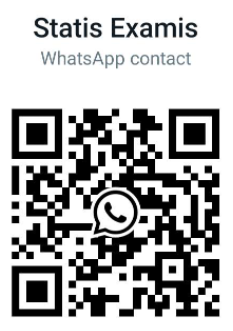Navigation » List of Schools » East Los Angeles College » Physiology » Physiology 001 – Introduction to Human Physiology » Winter 2021 » Lecture Exam 3 (A)
Question #1
A TRUE
B FALSE
Question #2
A The slope of diastolic depolarization in SA node cell action potentialsdetermines the heart rate.
B Stimulation of sympathetic nerves to the heart causes an increase in heart rate.
C A person whose heart lacks autonomic innervation has a faster heart rate at rest than a person with a normally innervated heart.
D Stimulation of parasympathetic nerves to the heart causes a slowing of heart rate.
E The slope of diastolic depolarization in SA node cell action potentialsdetermines the heart rate. Stimulation of sympathetic nerves to the heart causes an increase in heart rate. A person whose heart lacks autonomic innervation has a faster heart rate at rest than a person with a normally innervated heart. Stimulation of parasympathetic nerves to the heart causes a slowing of heart rate.
Question #3
A peristalsis.
B receptive relaxation.
C mass movement.
D segmentation.
E migrating motility complex.
Question #4
A Helicobacter pylori.
B Streptococcus pyogenes.
C Clostridium difficile.
D Staphylococcus aureus.
E Eschericia coli.
Question #5
A During digestion of a high-carbohydrate meal, such as a bagel.
B Elizabeth is likely to be in the same amount of pain all the time.
C During the digestion of a high-protein meal, such as a steak.
D During periods of hunger.
E During the digestion of a high-fat meal, such as greasy French fries.
Question #6
A TRUE
B FALSE
Question #7
A FALSE
B TRUE
Question #8
A FALSE
B TRUE
Question #9
A FALSE
B TRUE
Question #10
A FALSE
B TRUE
Question #11
A There are no afferent neuronal pathways from the GI tract to the central nervous system.
B If the autonomic nerves to the GI tract were cut, digestion and absorption of food could no longer take place.
C Networks of neurons in the wall of the GI tract innervate the wall’s smooth muscle.
D The nerve plexus of the GI tract exists in a single layer, just outside of the serosa.
E Smooth muscle of the GI tract is innervated by both sympathetic and somatic motor nerves.
Question #12
A A snack rich in protein, such as a dried meat stick
B A snack rich in lipids, such as slices of cheese
C All of these will have equal impacts on blood glucose level
D A snack rich in digestible polysaccharides such as a cooked potato
E A snack rich in cellulose, such as a bag of celery
Question #13
A Strenuous exercise
B Severe vomiting
C Severe diarrhea
D Hypoventilation
E Hyperventilation
Question #14
A HCl and gastrin
B HCl and intrinsic factor
C HCl and pepsinogen
D pepsinogen and intrinsic factor
E gastrin and intrinsic factor
Question #15
A FALSE
B TRUE
Question #16
A FALSE
B TRUE
Question #17
A Free amino acids are the only product of protein digestion that can beabsorbed from the lumen into intestinal epithelial cells.
B After absorption, the products of protein digestion are carried by blood directly to the liver.
C Only the exocrine pancreas produces enzymes that can digest proteins.
D The enzymes that digest protein are secreted in active form.
E Pepsin digests protein mainly in the small intestine.
Question #18
A A fetus with type B blood may be at risk if its mother has type O blood.
B The risk to anRh-positive fetus of an Rh-negative mother is lessened if she haspreviously carried anRh-negative fetus.
C An Rh-negative fetus may be at risk if its mother is Rh-positive.
D The greatest risk to a fetus occurs when both mother and fetus are Rh-positive.
E An Rh-positive fetus may be at risk if its mother is Rh-negative.
Question #19
A Delayed hypersensitivity
B Immune-complex hypersensitivity
C Cytotoxic hypersensitivity
D Immediate hypersensitivity
Question #20
A None of these are true.
B The patient will have increased immunity to bacterial infections.
C Many cells of the body will increase their cellular production of antiviral proteins.
D The patient will have increased immunity to viral infections.
E The patient may have increased immunity to the progression of cancer tumors.
Question #21
A Certain unusual cancers such as Kaposi’s sarcoma co-occur with relatively high frequency.
B The HIVvirus preferentially enters and disables B cells.
C It is caused by a retrovirus.
D It is transmitted by intimate contact with infected blood, sexual intercourse with an infected partner, or by an infected mother to her breast-fed infant.
E It is caused by a virus that contains RNA.
Question #22
A Neutrophils
B B cells
C Cytotoxic T cells (CD8 cells)
D NK cells
E Helper T cells (CD4 cells)
Question #23
A B cells and helper T cells
B Cytotoxic T cells and helper T cells
C Marcrophages and natural killer cells
D B cells and plasma cells
E Natural killer cells and B cells
Question #24
A FALSE
B TRUE
Question #25
A There is reduced breakdown of triglycerides in adiopse tissue and a decrease in plasma free fatty acids compared to normal.
B The body’s set point temperature is reset so that body temperature is maintained lower than normal.
C Secretion of cortisol by the adrenal cortex is decreased.
D The liver retains iron and zinc so plasma levels are decreased from normal.
E Appetite generally increases compared to normal.
Question #26
A refers to dilation of blood vessels by chemicals released by damaged tissue cells.
B refers to the engulfing of microbes and foreign molecules by macrophages.
C refers to the chemical attraction of neutrophils to a site of inflammation.
D is important only for innate immune responses.
E is important only for adaptive immune responses.
Question #27
A TRUE
B FALSE
Question #28
A TRUE
B FALSE
Question #29
A A decrease in alveolar P O2
B The same alveolar P CO2 as under normal conditions
C An increase in alveolar P CO2
D Increased alveolar P O2
E Decreased alveolar P CO2
Question #30
A The alveolar O 2 level has increased toward atmospheric levels.
B The level of O 2 in her blood has increased.
C The alveolar CO 2 has decreased to near atmospheric levels.
D The level of H + ions in her blood has increased.
E The pH of her blood has increased.
Question #31
A A β2-adrenergic antagonist
B A muscarinic agonist
C Histamine
D Pulmonary surfactant
E A β2-adrenergic agonist
Question #32
A Receptors in the aortic and carotid bodies
B Receptors that mediate the Hering-Breuer reflex
C Hair cells in the cochlea
D Baroreceptors in the aortic and carotid arch
Question #33
A TRUE
B FALSE
Question #34
A Decreased arterial PC O2
B Increased arterial P CO2
C Decreased arterial P O2
D Increased respiratory rate
E Increased arterial P O2
Question #36
A It increases airway resistance.
B It can only interact with other lipid molecules
C It increases the compliance of the lungs.
D It is secreted by type I alveolar cells.
E It is secreted into the intrapleural space.
Question #37
A TRUE
B FALSE
Question #38
A TRUE
B FALSE
Question #39
A Pneumothorax
B Exhalation/expiration
C Emphysema
D A collapsed lung
E Inhalation/inspiration
Question #40
A the duration of systole is greater than that of diastole.
B the contraction of the atria overlaps in time with the ventricular systole.
C the volume of blood leaving the left side of the heart is greater than that leaving the right side.
D the pressure of blood leaving the right ventricle is greater than that leaving the left ventricle.
E the duration of diastole is greater than that of systole.
Question #41
A FALSE
B TRUE
Question #42
A The rate of flow in a tube will decrease if the resistance to flow is decreased.
B The greater the resistance to flow in a tube, the greater the rate of flow for any given pressure difference.
C The rate of fluid flow in a tube will increase if the pressure at the beginning is increased while the pressure at the end of the tube stays the same.
D The flow of fluid in a tube depends upon the absolute pressure at the beginning of the tube.
E If both the resistance and the pressure gradient in a tube increase, the flow must also increase.
Question #43
A Decreased blood flow to tissues that results in vasodilation
B Decreased blood flow to tissues that results in vasoconstriction
C Increased metabolic activity that results in vasodilation
D Increased metabolic activity that results in vasoconstriction
E Increased blood pressure that drives blood more rapidly through tissues
Question #44
A FALSE
B TRUE
Question #45
A TRUE
B FALSE
Question #46
A The atria and ventricles would no longer beat in synchrony.
B The SA node would no longer set the pace for ventricular contraction.
C The ventricles would contract more frequently than the atria.
D The Purkinje fibers would not receive their typical action potential frequency from the bundle branches.
E There would be a slowing of the frequency of contraction of the ventricles.
Question #47
A sympathetic; reactive hyperemia; dilation; intrinsic; extrinsic
B parasympathetic; active hyperemia; constriction; extrinsic; intrinsic
C parasympathetic; reactive hyperemia; dilation; extrinsic; intrinsic
D sympathetic; active hyperemia; dilation; extrinsic; intrinsic
E sympathetic; flow autoregulation; constriction; intrinsic; extrinsic
Question #48
A The set point for normal arterial blood pressure
B A disease in which blood clot formation is impaired
C The prevention or stoppage of blood loss
D A protein inside red blood cells that binds oxygen with high affinity
E The maintenance of relatively stable conditions in the internal environment
Question #49
A FALSE
B TRUE
Question #50
A TRUE
B FALSE
Question #51
A A blood clot is a network of interlacing strands of fibrinogen.
B Blood clotting occurs too rapidly in individuals with the disease hemophilia.
C Blood clotting is enhanced by prostaglandin I2 (PGI2) and nitric oxide.
D Blood clotting requires activation of thrombin.
E Injecting tissue plasminogen activator (t-PA) into a patient who is bleeding will aid blood clotting.
Question #52
A FALSE
B TRUE




